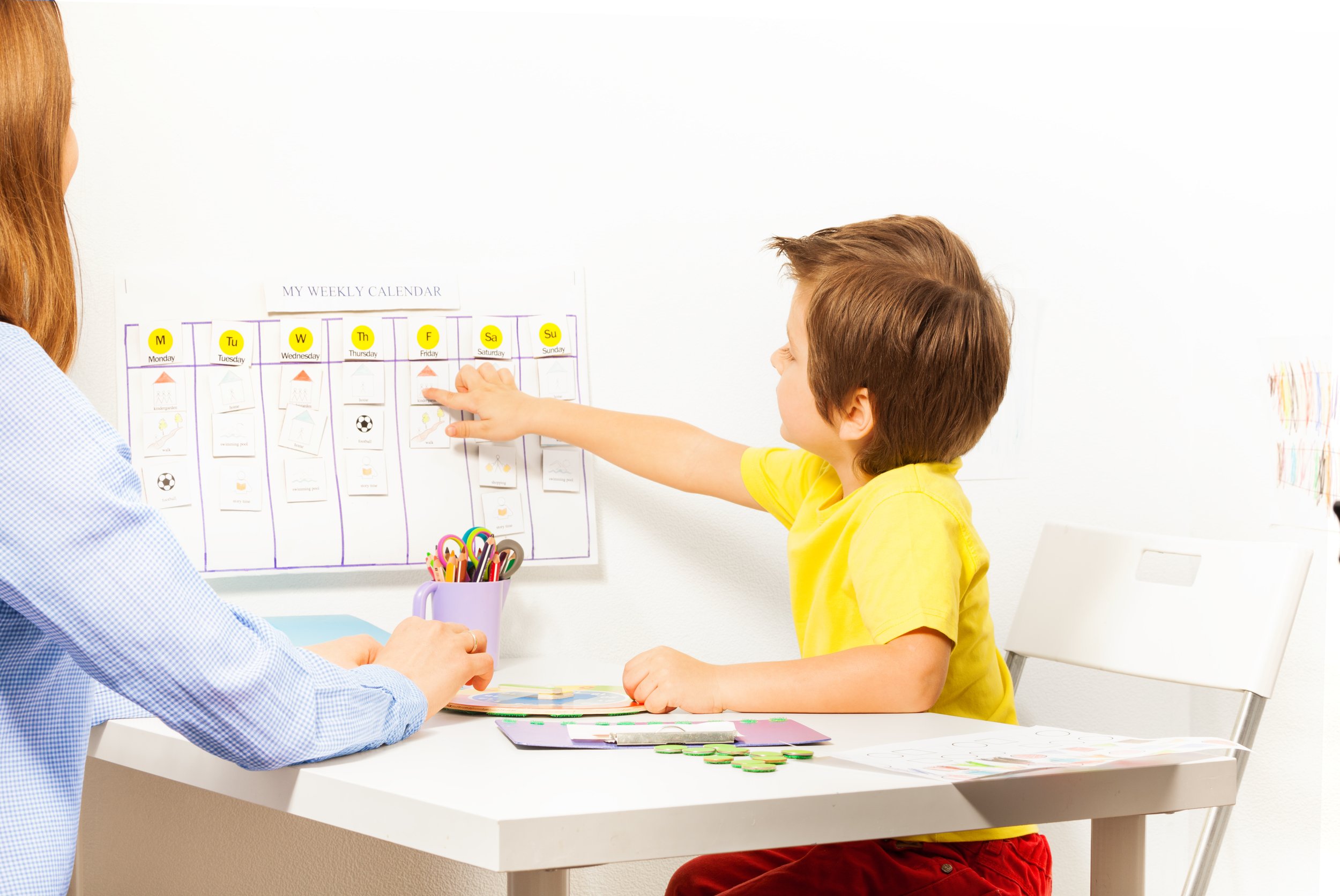7 Easy Ways to Simplify Your Homeschool Day
How can homeschoolers get their work done and still find time for fun? It’s all about balance and letting go.

Let’s face it. Some homeschool days can drag on and on. There are days we overschedule, days when the kids seem to take forever to complete the simplest of tasks, and still other days where an emergency visit to the doctor to have an eraser removed from your two-year-old’s nose takes precedence.
As the summer winds down, many homeschoolers are looking for ways to schedule their homeschool year without pulling their hair out. How do we balance it all without feeling like we are tied to textbooks at our kitchen table? Here are seven ways I’ve learned to relax and finish our day in record time.
1. Stop when you achieve mastery.
Does your child really need to do those thirty math problems just because they are in the workbook? Do they understand the concept by completing only ten problems? Go with that, and move on when your child has mastered the skill. Don’t feel obligated to complete work just because it’s there or because a textbook publisher thought six pages was the appropriate amount of learning in this lesson.
2. Skip the parts that don’t speak to you.
We use textbooks as more of a guide, rather than a script to follow. We pull out what we need and what excites us, and ditch the rest. All of the links, bonus questions, extra experiments, and “check this out” areas need not be done. Keep it simple.
3. Combine subjects when you can.
Combining subjects is a great way to streamline homeschooling time. Work in language arts essays with history work. Combine art and language arts. We use unit studies when we can. And some subjects, like history and science, can work for kids at multiple levels with minimal adjustment on either end. Even if you’re not ready to lean all the way into this, combining a few subjects is a terrific way to seamlessly blend subjects into a cohesive learning experience.

4. Make a schedule that works.
Not every subject or learning experience needs to be covered every day. Try a four-day schedule, and leave the fifth day for down time or for finishing up projects or work that needs more attention. Try a Monday, Wednesday, Friday/Tuesday, Thursday schedule. Maybe foreign language or physical education only needs to be done twice a week. If you are scheduling every subject daily, be sure that you are realistic about the amount of material you think you can cover.
5. Don’t let your schedule rule the day.
Schedules and routines look great on paper, but the reality is that the day seldom goes as planned. If we miss an assignment due to illness, or life, we simply move it to the next day. I also evaluate the lesson to decide if this is something that can be tossed entirely. Certainly, you don’t want to skip learning that needs to happen in progression, but tossing an experiment, art project, or busy work is perfectly acceptable.
6. Stop comparing.
Comparing your day or homeschool to others is a quick way to lose confidence. Comparing makes you feel as if you can’t keep up with what everyone else is doing. Set goals for YOUR children and YOUR homeschool, and work toward those. On days when you fall short, look at the bigger picture of what has been accomplished and where learning has leapt ahead.
7. Try something different.
If you are feeling suffocated by a schedule, try tossing it to the side. Go with the flow for a few days and see how the kids are responding. If it’s working, great; if not, try again. Unschooling can be a great way to alleviate the pressure of a schedule. Give it a go to see if it works for your family.
Pinterest, blogs, curriculum providers, and Instagram can suck time from our day and make us want to try every new thing that comes along. Loosely schedule what you want to cover each week in a planner and then whittle it down to more specific details. Be flexible when you don’t get to everything. Tomorrow’s another day.
A creative learning space is less about actual stuff and more about giving your children space to explore ideas in different ways.
When your marriage ends, homeschooling probably isn’t the first thing on your mind — but navigating a divorce while homeschooling can bring up unexpected issues.
Whether you live to color-code or need a system that flexes and changes with your family’s needs, keeping good homeschool records is essential. And you can do it — all you need is a system that you’ll actually use.
Aminata and Malcolm have discovered that a purposeful morning routine is the perfect start to their homeschool day.
A love of reading comes naturally for some kids and not-so-naturally for others, but you can do a lot to make your home a space where reading is an important part of everyday life.
When your homeschool starts to feel like more work than fun, it’s time to make a change.
If you’re homeschooling your middle schooler, you probably have a lot of questions. The good news: It’s going to be pretty exciting to navigate these big changes with your homeschooler.
Planning your homeschool year is about more than just making a weekly checklist or figuring out what to use for science. If you want your homeschool to grow with you and take your kids where they want to go, keeping these questions in mind can help you stay on track.
The best way to plan your homeschool year is the way that works best for your particular homeschool — and like all the rest of homeschooling, it may require some trial and error to find the right balance. That’s why our “perfect” planning method is adaptable as you need it to be: Use the skeleton to make a loose frame for the year, or go all out and plan every week in advance. It’s your homeschool. Make a plan that works for you.
A homeschool retreat can be inspiration, direction, and sanity saver all in one — and if you don’t have a secular homeschool conference nearby, you can create your own.
Chances are, you’re doing better with this whole homeschool thing than you think you are. These six signs are all indicators that you’re on the right track — and we think that’s something you should celebrate.
5 surprising ways to build a homeschool life that works for your whole family — including you. “If your homeschool isn’t giving you personal satisfaction most of the time, something needs to change.”
It’s easy to get so caught up in your everyday to-learn lists that you lose sight of the bigger picture of what you want your homeschool life to feel like.
Reinventing your homeschool is just part of the process, but this six-step process will help your homeschool grow in the ways that work best for your family.
Your official last day of school can be whenever you want—so pick a date that matches your family’s homeschool rhythm (or don’t pick a date and have a year-round homeschool).
The secret to transitioning to homeschooling high school isn't so secret: Just keep doing what you've been doing, and trust that you've gotten to know your kid's academic abilities.
College isn't the only post-high school option for homeschooled teens. Whether you're in search of an alternate path or a great gap year, here are some options for what's next.
This easy organization method won’t stress you out and will make your life a whole lot easier when you start working on transcripts and other official paperwork for high school graduation.
There are two keys to a successful homeschool: The first is figuring out what works for your family, and the second is knowing when your carefully figured out system needs to change.
One essential skill homeschoolers don’t always get to practice: Turning work in on time.
There’s no one right way to use all that reading you already do to help your kids absorb information, think critically, and start making connections, but here are six strategies to get you started.
When you get that stuck-in-a-rut feeling — and we all do sometimes — these simple-to-pull-off changes can make your homeschool feel bright and shiny again.
“We loved the idea of living without a schedule, but we quickly discovered that we were miserable living without a routine.”
This is my go-to recommendation for new homeschoolers — it's designed to help you find your rhythm, build comfort with leading your students’ learning, and keep the learning going as you find your way. It’s basically a six-month, low-cost-investment guide to starting homeschooling.
If you’re homeschooling to get through the world health crisis, you totally count as a homeschooler — but what you need may not be traditional homeschool recommendations.
Navigating big changes in your homeschool life can seem like a scary prospect, but you’ve got all the tools you need to make your next big transition feel as exciting as it is stressful. Here’s what you need to know.
Beverly Burgess is a Homeschool Coach, Blogger, Inspirational speaker, and author of Out of the Box Learning~Empowering YOU On Your Homeschool Journey.
She lives in Rhode Island with her husband and three children.
































BEVERLY BURGESS is a Homeschool Coach, Blogger, Inspirational speaker, and author of Out of the Box Learning~Empowering YOU On Your Homeschool Journey.
She lives in Rhode Island with her husband and three children.